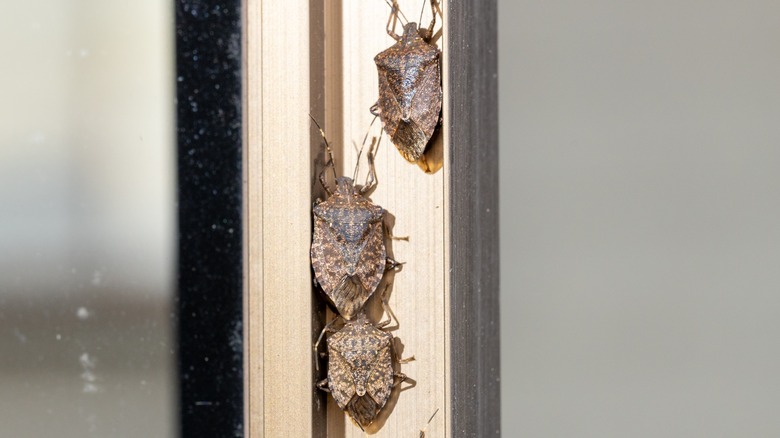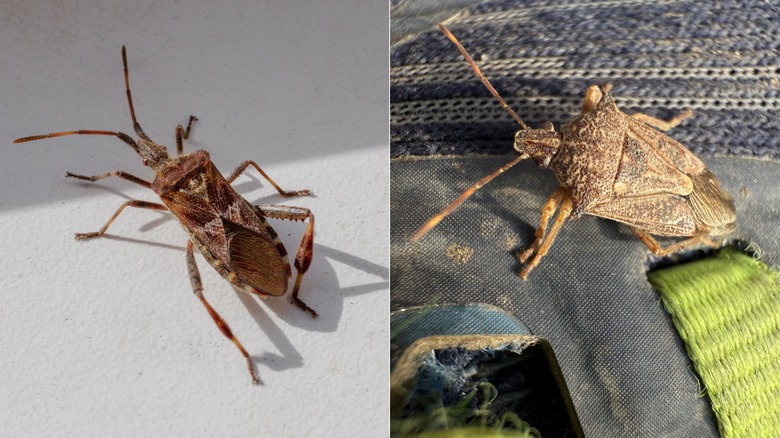How To Know If What You're Seeing Is A Stink Bug Or Just A Lookalike
Have you ever spotted a bug scuttling across your window and worried it was a dreaded stink bug? These little creatures have a strong preference for warm environments and may be seen coming into homes, like other bugs that appear in your house in the cold winter months. So if it's cold outside and you spot something that looks like a stink bug crawling along your windowsill, you're right to be a bit suspicious. But before you start panicking about an infestation and calling pest control, take a closer look, because there are actually many other bugs that look similar to stink bugs, and their distinctive markings and shapes will help you tell the difference.
Stink bugs, whose official name is brown marmorated stink bugs, are small brown creatures that are shaped like shields with distinct patterns on their backs, ranging from dots to stripes or even marbled patterns. And of course, they stink. That smell is their defense move. If they feel threatened — or if you squish them — they will let off a wholly disgusting and musty odor that hangs around way too long (if you've ever had the displeasure of smelling this, you won't forget it).
Luckily, there are ways to get rid of stink bugs without releasing their scent, such as trapping them or vacuuming them up instead of crushing them. But unluckily, there are a few lookalike bugs that release a similar scent when under attack, so how do you correctly identify what you're dealing with?
Common impostors and how to tell them apart
You may think that the second you notice that tell-tale smell wafting through the air, the mystery is solved and it's time to figure out a way to get rid of stink bugs in your home. But actually, the boxelder bug, the western conifer seed bug, and the spined soldier bug also release a similarly unpleasant aroma, so knowing the physical differences between them will allow you to correctly identify what is in your home. Boxelder bugs can be differentiated due to the bright red lines tracing their wings and bodies. They even have red eyes.
Western conifer seed bugs, seen above on the left, are a bit longer than stink bugs, with leaf-shaped pads along their rear legs. And when they fly, they make a noise similar to bees. The good news here is that these stink bug impersonators don't tend to infest your house in large numbers or cause any structural damage, so spotting one doesn't necessarily mean you're in for a full invasion; it just means you have to show that little guy the exit.
Another common misidentification happens with the spined soldier bug, pictured on the right, which is actually a beneficial predator that can help with garden pests. These bugs are slightly chunkier, with spiky shoulders, and they also release a smell similar to the stink bug. But maybe reconsider your plans to squish them and instead return them outside to do their job in the yard.

